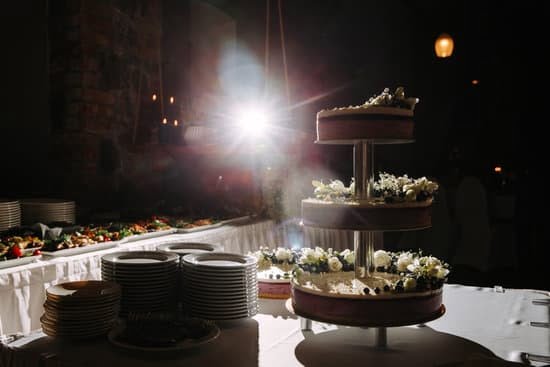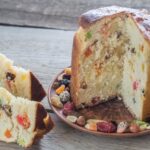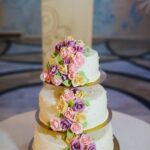How do you decorate cakes? The art of cake decorating has been a beloved tradition for centuries, evolving from simple frosting designs to intricate, multi-layered masterpieces. This article will delve into the world of cake decorating, highlighting its rich history and growing popularity in modern times. From essential tools and materials to advanced techniques and troubleshooting tips, this comprehensive guide will equip readers with the knowledge and confidence to create beautifully decorated cakes for any occasion.
The practice of cake decorating dates back to ancient civilizations, where elaborate sweet treats were used to mark special celebrations and milestones. Today, it has evolved into a highly coveted skill, with professional cake decorators captivating audiences with their stunning creations. Whether it’s a birthday, wedding, or holiday celebration, a beautifully decorated cake can serve as the centerpiece of any event.
As the demand for unique and personalized cakes continues to rise, more people are turning to cake decorating as a creative outlet. With the accessibility of resources and tutorials online, enthusiasts at any skill level can join in on the fun. In the following sections, we will explore the essential tools, techniques, and tips for successful cake decorating, empowering readers to elevate their baking endeavors to an art form.
Essential Tools and Materials for Cake Decorating
Decorating a cake is an art that requires the right tools and materials to achieve professional results. Whether you are a beginner or an experienced baker, having the essential tools and materials for cake decorating is crucial. These items not only make the process easier but also help in creating beautiful and intricate designs on your cakes.
Some of the essential tools for cake decorating include piping bags, tips, turntable, offset spatula, cake scraper, and a good quality stand mixer. These tools help in achieving smooth frosting, precise piping, and overall better control over the decorating process. Additionally, having a collection of different sized cake pans and a sturdy cake board is important for creating multi-tiered cakes.
In terms of materials, good quality fondant, gum paste, food coloring gels, edible glitters, and luster dust are essential for adding color and texture to your cake decorations. It’s also important to have a variety of sprinkles, edible pearls, and other decorative elements to add that extra flair to your designs.
One of the most common questions beginners ask is “how do you decorate cakes?” The key lies in having the right tools and materials at your disposal. Investing in high-quality supplies will not only make the process smoother but will also elevate the overall look of your decorated cakes.
| Essential Tools | Essential Materials |
|---|---|
| Piping bags | Fondant |
| Tips | Gum paste |
| Turntable | Food coloring gels |
Preparing the Cake for Decorating
Before you can start decorating your cake, it is crucial to select the right type of cake. A sturdy and dense cake, such as a pound cake or sponge cake, works best for decorating as it can hold up well under the weight of the frosting and decorations. Avoid using light and airy cakes as they may not provide enough support for elaborate designs.
One of the key steps in preparing a cake for decorating is to ensure that it has a level surface. Use a long serrated knife or a cake leveler to carefully trim off any domed or uneven areas on top of the cake layers. Once the layers are leveled, consider adding a layer of filling between them to add extra flavor and moisture to the cake.
When it comes to frosting the cake, smooth out a thin layer of buttercream or ganache all over the surface before applying the final coat. This will help lock in any crumbs and create a clean base for decorating.
After you have filled and frosted your cake, it is best to let it chill in the refrigerator for at least 30 minutes before adding any decorations. This step allows the frosting to firm up, making it easier to work with when applying intricate designs. It also helps prevent any smudging or melting of delicate decorations once they are attached to the cake.
By carefully selecting the type of cake, leveling and prepping it correctly, you can set yourself up for success when it comes time to decorate. These important preparatory steps lay a strong foundation for creating beautifully decorated cakes that will impress your friends and family on any occasion.
Basic Techniques for Cake Decorating
When it comes to cake decorating, mastering basic techniques is essential for creating beautiful and visually appealing cakes. One of the most popular and versatile techniques is buttercream piping, which involves using a piping bag and various tips to create different patterns and designs on the cake. To master this technique, it’s important to practice controlling the pressure and flow of the icing as well as familiarizing yourself with different piping tips for creating borders, flowers, and lettering.
Another basic technique in cake decorating is working with fondant. Fondant is a type of icing that can be rolled out into a thin, smooth layer to cover the cake or molded into shapes for decorative elements.
To work with fondant, you’ll need to knead it until it becomes pliable, roll it out evenly with a rolling pin, and carefully drape it over the cake to smooth out any wrinkles or air bubbles. Fondant also allows for intricate details and designs such as ribbons, bows, and figurines.
Additionally, mastering royal icing details is another fundamental skill in cake decorating. Royal icing is made from powdered sugar and egg whites or meringue powder and can be used for creating intricate designs like lace patterns, intricate borders, and delicate flowers. It’s important to learn how to properly flood areas with royal icing as well as achieving the right consistency for detailed work.
Advanced Tips and Tricks for Cake Decorating
Once you have mastered the basic cake decorating techniques, it’s time to take your skills to the next level with advanced tips and tricks. One of the most impressive advanced techniques in cake decorating is creating sugar flowers. These delicate, lifelike blossoms are made from gum paste or fondant and require patience, precision, and practice.
Additionally, airbrushing is another advanced method that adds a professional touch to cakes. Using an airbrush allows for seamless gradients, intricate designs, and vibrant colors on your cakes.
Sculpting is another advanced skill that can elevate your cake decorating game. Whether it’s creating 3D figures or sculpting elaborate cake toppers, this technique requires creativity and a good understanding of the medium being used. For those looking to take their cake decorating business to new heights, mastering these advanced techniques can set you apart from the competition.
Expert Advice for Achieving Professional Results
When delving into advanced cake decorating techniques, it’s essential to seek advice from professionals in the field. Attending workshops, enrolling in specialized courses, or seeking mentorship from experienced decorators can provide invaluable insights and guidance. Additionally, exploring online tutorials and resources dedicated to advanced cake decorating can be a valuable source of inspiration and knowledge.
Moreover, consistent practice and experimentation are crucial when perfecting advanced cake decorating techniques. Remember that Rome wasn’t built in a day, and proficiency in these skills takes time and dedication. With dedication and perseverance, you can achieve professional-looking results in your advanced cake decorating endeavors.
| Advanced Techniques | Advice |
|---|---|
| Sugar Flowers | Patience & Precision |
| Airbrushing | Seamless Gradients & Vibrant Colors |
| Sculpting | Creativity & Practice |
Decorating for Different Occasions and Themes
Birthday Cakes
When decorating a cake for a birthday, consider the personality and interests of the recipient. Bright colors, fun shapes, and creative designs are often popular choices for birthday cakes. For children’s parties, consider incorporating their favorite cartoon characters or hobbies into the cake design. For adults, elegant floral decorations or themed elements related to their passions can make for a meaningful and memorable birthday cake.
Wedding Cakes
Wedding cakes are often the centerpiece of the reception and should reflect the style and theme of the wedding. Traditional white tiered cakes with intricate piping or fondant details are timeless options for weddings. However, modern trends have also seen couples opting for unique designs that showcase their personality or match the overall wedding theme. From rustic naked cakes to elaborate sugar flower arrangements, there are endless possibilities when it comes to designing a wedding cake.
Holiday Cakes
During holidays such as Christmas, Easter, or Halloween, themed cakes are always appreciated. Consider incorporating seasonal colors and motifs to enhance the festive spirit of these occasions. Whether it’s snowflakes and winter scenes for Christmas or pumpkins and spooky elements for Halloween, holiday-themed cakes provide an opportunity to showcase creativity and spread joy through delightful confections.
By considering the significance of each occasion or theme, decorators can craft visually stunning cakes that will be cherished by those celebrating special moments in their lives.
Troubleshooting Common Cake Decorating Issues
When it comes to cake decorating, it’s inevitable that you’ll encounter some challenges along the way. Whether it’s dealing with cracked fondant or buttercream that won’t hold its shape, knowing how to troubleshoot common decorating issues is essential for achieving a professional-looking result. Here are some common problems that may arise during the cake decorating process and solutions for overcoming them:
- Cracked Fondant: One of the most frustrating issues when working with fondant is cracking. To prevent this, make sure your cake is properly covered in a thin layer of buttercream or ganache before applying the fondant. If cracks do appear, gently smooth them out with a small amount of vegetable shortening.
- Buttercream Melting: If you find that your buttercream is melting and losing its shape, it may be due to warm temperatures in your kitchen. Try cooling down the room or placing your cake in the refrigerator for a short period of time to help the buttercream set.
- Frosting Air Bubbles: When piping buttercream onto a cake, air bubbles can sometimes form and create an uneven texture. To avoid this, gently tap the cake on a flat surface after piping or use a toothpick to release any trapped air bubbles.
By being prepared to troubleshoot these common issues and having the knowledge to address them effectively, you can ensure that your decorated cakes turn out beautifully every time.
Remember that practice makes perfect, so don’t be discouraged if you encounter these problems at first-cake decorating is a skill that improves with experience and experimentation on different ways of baking.
Showcasing Your Decorated Cakes
When it comes to showcasing your decorated cakes, presentation is key. A beautifully decorated cake deserves to be displayed and captured in all its glory. Here are some tips for showcasing your decorated cakes:
1. Presentation: When displaying your decorated cake, consider using a cake stand or a decorative platter to elevate the cake and make it the focal point of the display. You can also add fresh flowers, foliage, or edible decorations around the base of the cake for an extra pop of color and interest.
2. Photography: Capturing professional-looking photos of your decorated cakes is essential for showcasing your skills on social media or other platforms. Take advantage of natural light for the best photos and try different angles to find the most flattering shot. Consider investing in a good quality camera or smartphone with a high-resolution camera for crisp and clear images.
3. Social Media and Online Platforms: Once you have captured stunning photos of your decorated cakes, share them on social media platforms such as Instagram, Facebook, or Pinterest to showcase your work. Use relevant hashtags to reach a wider audience and consider creating a dedicated portfolio or website to display your cake decorating skills.
By paying attention to presentation, photography, and online showcasing, you can effectively highlight and share your talent for cake decorating with others. It’s a great way to build connections within the baking community and inspire others while also gaining recognition for your creative endeavors.
Conclusion
In conclusion, cake decorating is a creative and rewarding hobby that allows individuals to unleash their artistic talents and create stunning edible masterpieces. Throughout history, cake decorating has evolved from simple designs to intricate works of art, with the growing trend and popularity of cake decorating showcasing the endless possibilities for creativity. By mastering essential tools, preparing the cake for decorating, and learning basic and advanced techniques, individuals can elevate their cake decorating skills to new levels.
As individuals explore different occasions and themes for cake decorating, they can showcase their creativity by designing cakes for birthdays, weddings, holidays, and more. With the right tools and techniques, anyone can bring their imaginative cake ideas to life. Additionally, troubleshooting common issues that arise during the cake decorating process is vital for ensuring a successful outcome. By addressing challenges with practical solutions, individuals can achieve professional-looking results that will impress friends and family.
Ultimately, the art of cake decorating offers endless opportunities for personal expression and satisfaction. The ability to showcase decorated cakes through photography or social media platforms allows enthusiasts to share their creations with a wider audience while connecting with other passionate decorators.
Whether it’s as a hobby or a potential career path, exploring the world of cake decorating opens up exciting possibilities for creativity and self-expression. So go ahead – grab your piping bags and fondant tools and let your imagination run wild as you embark on your own journey in the delicious world of cake decoration.
Frequently Asked Questions
What Is the Best Way to Decorate a Cake?
The best way to decorate a cake is to start with a smooth and even layer of frosting. Then, you can get creative with piping techniques, fondant decorations, edible flowers, or other decorative elements that suit the occasion or theme of the cake.
What Are the Steps in Decorating a Cake?
Decorating a cake involves several steps. First, you need to ensure that the cake is completely cooled before starting. Then, apply a crumb coat of frosting to seal in the crumbs. Next, add your final coat of frosting and smooth it out. Finally, you can add any additional decorations like piping details, fondant shapes, or edible embellishments.
What Do People Use to Decorate Cakes With?
People use various materials to decorate cakes with, such as buttercream frosting for piping and spreading, fondant for creating detailed shapes and designs, edible glitter and sprinkles for adding sparkle and texture, fresh flowers for a natural touch, and even chocolate shavings or curls for an elegant finish.
The choice of decorations depends on the desired look and theme of the cake.

Welcome to our cake decorating blog! My name is Destiny Flores, and I am the proud owner of a cake decorating business named Cake Karma. Our mission is to provide delicious, beautiful cakes for all occasions. We specialize in creating custom cakes that are tailored specifically to each customer’s individual needs and tastes.





